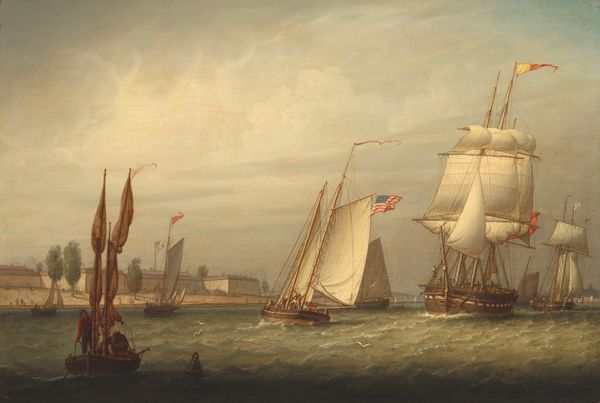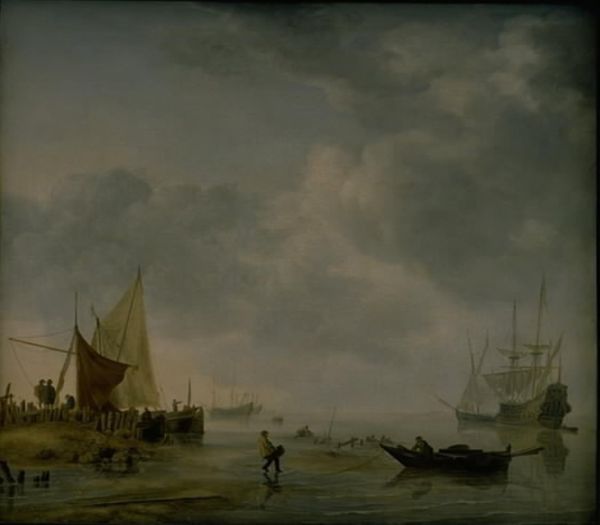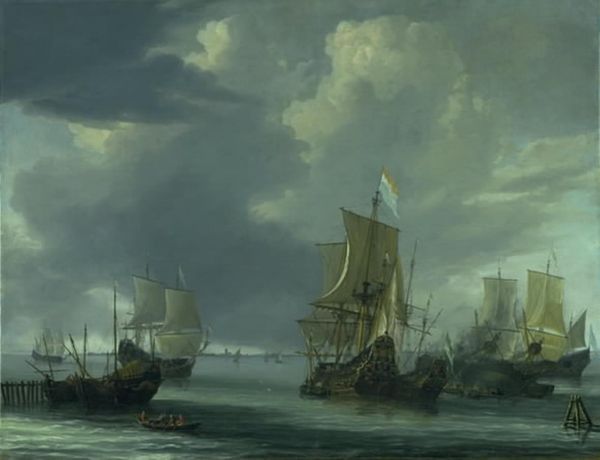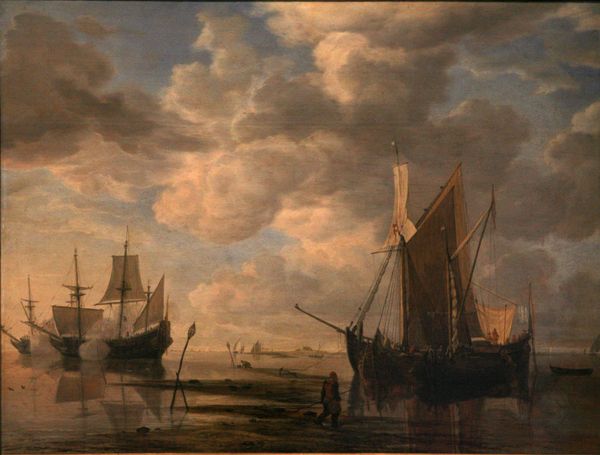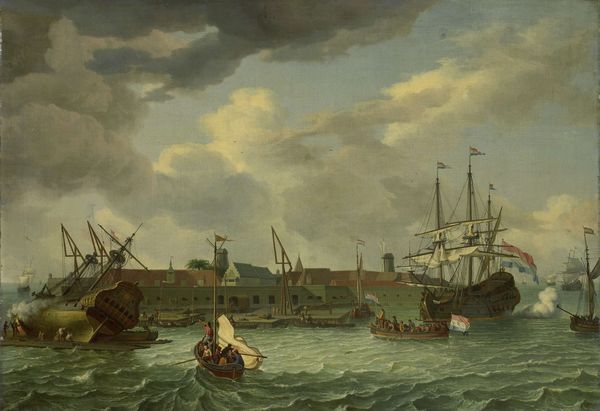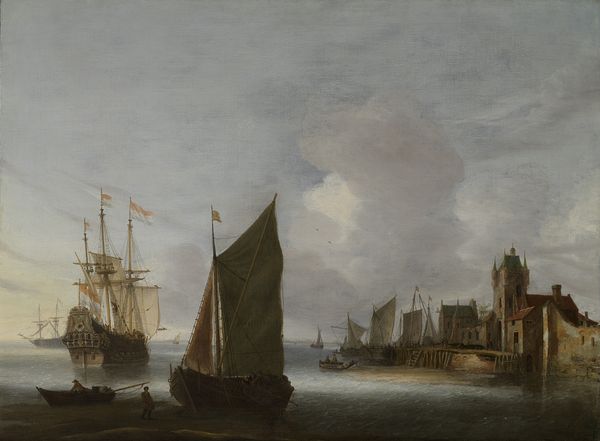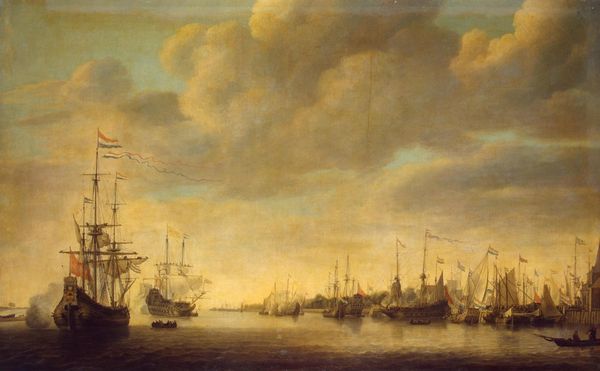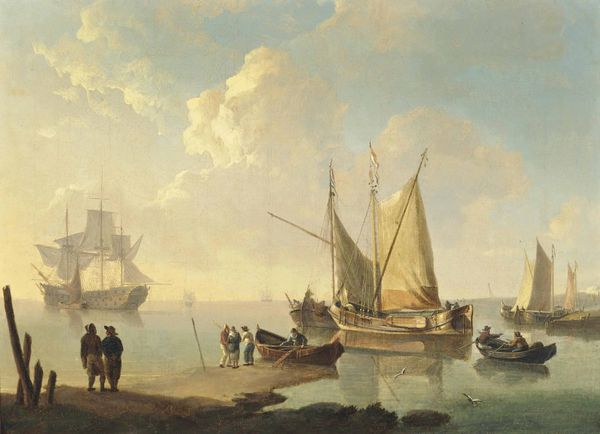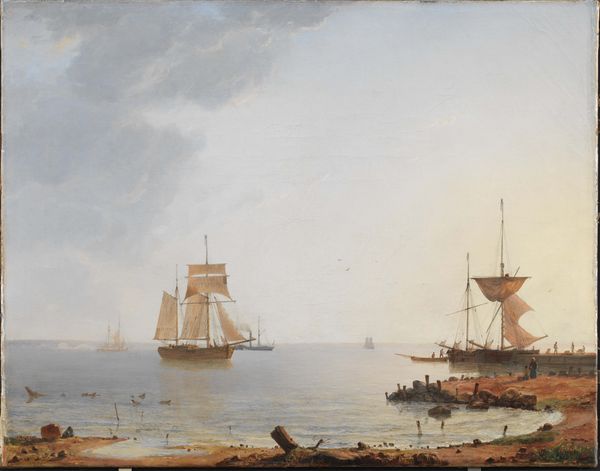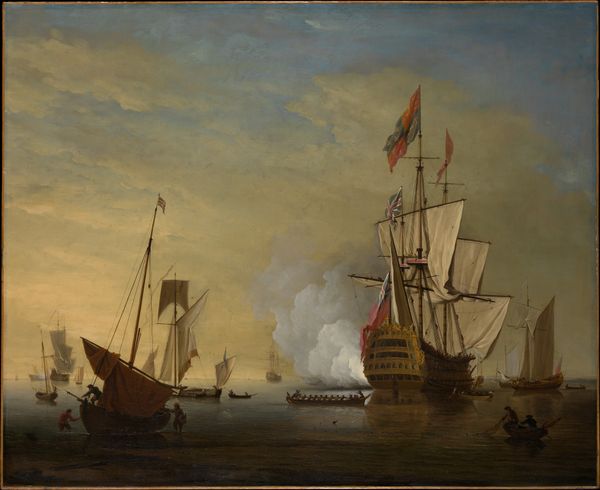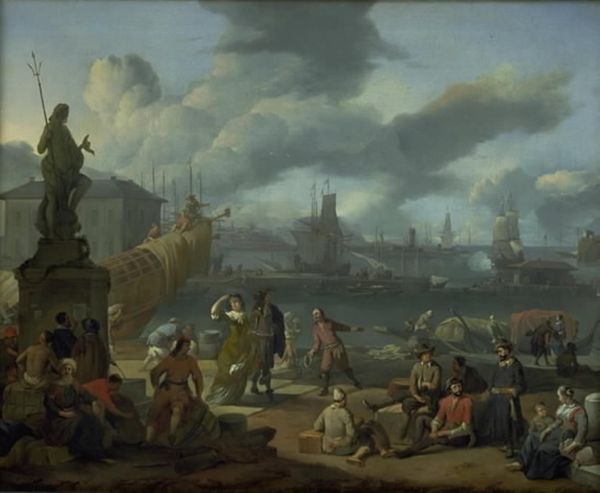
Dimensions: 102 cm (height) x 165 cm (width) (Netto)
Curator: Here we have "Københavns havn set fra Larsens Plads", or "Copenhagen Harbor Seen from Larsen's Place," painted between 1764 and 1790 by Erik Pauelsen. It’s an oil-on-canvas work currently held at the SMK, Statens Museum for Kunst. Editor: Ah, the harbor. I love the light—it's a muted, almost melancholic, kind of glow. And those enormous, billowing clouds... I feel like I could smell the salt air looking at this! It's vast, somehow both serene and bustling. Curator: It certainly captures a particular moment in Copenhagen's history, a moment of commercial and maritime growth. Genre paintings were gaining popularity and harbor scenes were often commissioned by merchants and officials, wanting to document and celebrate their successes. Editor: Success definitely smells like fish sometimes, doesn’t it? Jokes aside, you can feel the importance of the port as the engine of the city here, the ships looming so large in the frame. Curator: The details are also fascinating: the figures on the docks going about their business. It offers a snapshot of 18th-century labor, and it presents the labor as noble. Editor: And everyone seems to be doing something vital. Whether relaxing and trading tales or sweating it out by that huge ship's bow, you feel like a key piece of Copenhagen turning. Are those naval ships or merchant vessels? Curator: Predominantly merchant, though the large vessel being repaired suggests naval interests. See how Pauelsen blends aspects of Baroque dramatic composition, the grandiose clouds with realistic elements from daily life? Editor: Yes! Like it's both stage and a slice of life. That's probably what captures my attention the most about this piece. It reminds you to savor moments of change. You understand, things are never truly "finished"—not harbors, not people. There is activity to do and keep up, and beauty in watching this activity, but the melancholic sense it evokes tells that all activities end one day, and so do humans. Curator: Absolutely, and it serves as an interesting perspective of civic pride alongside historical awareness. These kinds of depictions shape the identity of Copenhagen as a modern city with connections and a long trajectory, while understanding it all shall end one day. Editor: It's like a poetic postcard, one to savor, contemplate, and then file away safely so you can come back and view again in other 100 years.
Comments
No comments
Be the first to comment and join the conversation on the ultimate creative platform.

